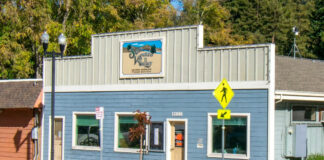I’d like to make my annual plea for the liberal use of sunscreen to protect all of us — young and old — from the damaging effects of the sun. Please understand that the “healthy” bronze tan color that many people seek is actually how the skin demonstrates that it has been damaged by the sun.
The sun produces two types of invisible light. One is ultraviolet A (UVA), which is the ray that produces a tan but causes skin damage and aging, (think wrinkles and “old age” skin spots). The other is ultraviolet B (UVB), which causes the uncomfortable sunburn.
Both types can cause skin cancer, especially the deadly melanoma. This year in the U.S. there will be approximately 76,000 new cases of melanoma with some 9,000 deaths. These statistics can be reduced significantly by protecting our skin from the sun.
The damaging rays from the sun are most intense between the hours of 10 AM and 4 PM.
These are my suggestions:
- Always start the summer season with a new fresh tube of sunscreen; price has nothing to do with performance.
- Use a sunscreen with an SFP rating of at least 30. Higher than 50 is probably not necessary.
- A sunscreen should be labeled “broad spectrum” protecting against both UVA and UVB and be water/sweat resistant.
- Use at least 1 ounce (2 tablespoons) for your entire body, and apply liberally to the face, ears, and neck.
- Don’t overlook applying to feet, back of neck, and bald spots.
- Apply at least 20 minutes before sun exposure and every 2 hours thereafter and more frequently if swimming or sweating profusely.
- Avoid using sunscreen sprays on children as they can inhale the chemical ingredients. Use the lotion form only.
- Whenever possible, wear light colored tight knit clothing and brimmed hats while in the sun.
- Avoid tanning salons where damage — similar to the effects of the sun — can be done to the skin.
A sunscreen that has always been a favorite of mine, and one just recently highly recommended by Consumer Reports Magazine, is a brand called “NO-AD.” This product comes with an SPF of either 30 or 45, and is one of the cheapest sun screen products on the shelves.
Enjoy your outdoor summer activities, but do yourselves and especially your children a favor, and protect your/their skin from both damage and cancer by properly using a good sunscreen product.
-Terry Hollenbeck, M.D., is an urgent-care physician at Palo Alto Medical Foundation Santa Cruz in Scotts Valley. Readers can view his previous columns on his website, valleydoctor.wordpress.com, or email him at va**********@*******al.net. Information in this column is not intended to replace advice from your own health care professional. For any medical concern, consult your own doctor.












